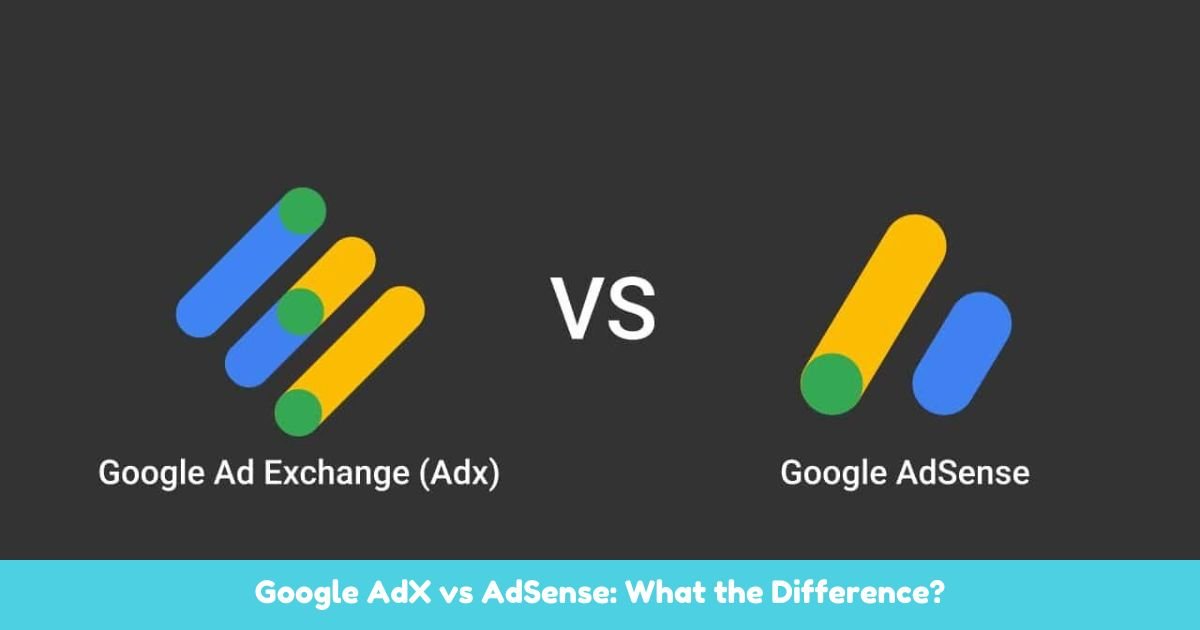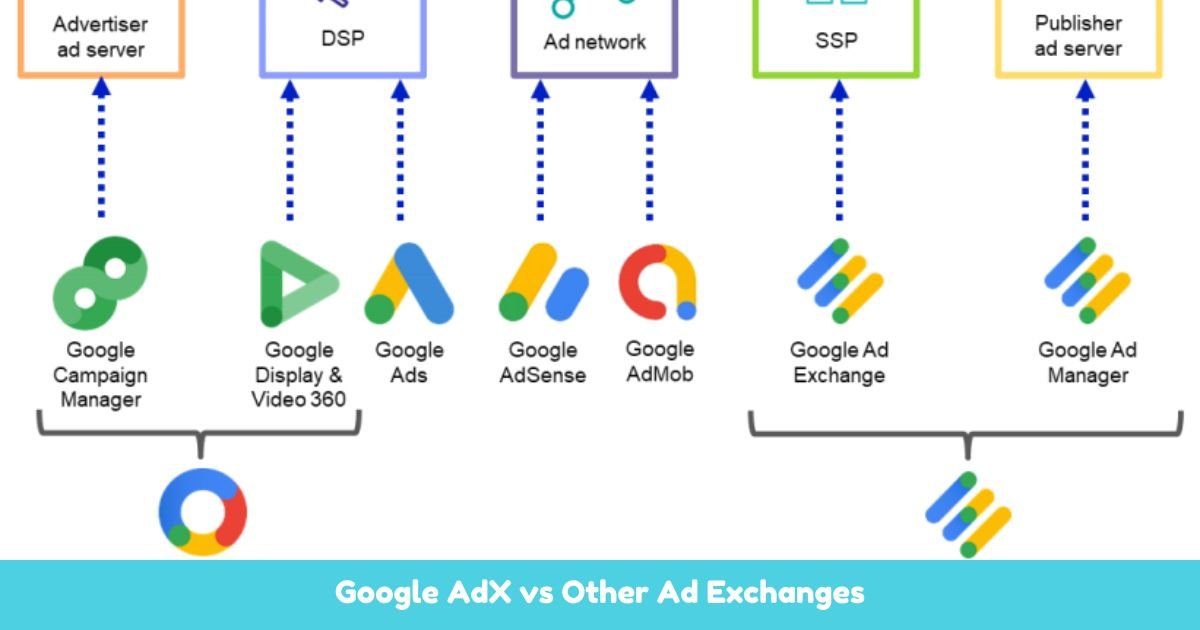What is Google AdX? A Complete Guide for Publishers in 2024
Discover what Google AdX is, how it works, and why its a premium ad exchange for publishers. Learn how AdX compares to AdSense and how to get access in 2025.
If you a publisher looking to maximize your ad revenue, you probably heard of Google AdX. But what exactly is it, and how does it compare to other platforms like Google AdSense? In this guide, we explain everything you need to know about Google AdX, how it works, and why its a top choice for publishers in 2025.
What is Google AdX?
Google AdX (Google Ad Exchange) is a premium programmatic advertising platform. It allows publishers to sell their ad space to advertisers in real-time. Unlike AdSense, which is designed for smaller publishers, AdX is built for larger websites with high traffic.
How Does Google AdX Work?
Google AdX uses a process called real-time bidding (RTB). Here how it works:
- Advertisers bid for your ad space in real-time.
- You set a minimum price for your ad inventory, and the highest bidder wins the ad space.
- You earn revenue based on the winning bid.
Key Features of Google AdX
Google AdX offers several features that make it a top choice for publishers:
- Access to Premium Advertisers: AdX connects you with high-quality advertisers who are willing to pay more for ad space.
- Advanced Targeting Options: Advertisers can target specific audiences, increasing ad relevance and revenue.
- Integration with Google Ad Manager: Manage all your ad inventory in one place with Google Ad Manager.
- Support for Premium Ad Formats: AdX supports video ads, native ads, and rich media ads, which often have higher CPMs.

Google AdX vs AdSense: What the Difference?
While both Google AdX and AdSense are ad platforms, they serve different types of publishers. Here a detailed comparison:
Google AdSense
- Best For: Small to medium-sized publishers.
- Ease of Use: Easy to set up and use, even for beginners.
- Control: Limited control over ad placements and advertisers.
- Earnings: Lower CPMs compared to AdX.
Google AdX
- Best For: Large publishers with high traffic.
- Ease of Use: Requires more technical knowledge and integration with Google Ad Manager.
- Control: More control over ad inventory, pricing, and advertisers.
- Earnings: Higher CPMs due to access to premium advertisers.
For a detailed comparison, check out our post on Ezoic vs AdSense.
Benefits of Google AdX for Publishers
Here why Google AdX is a top choice for publishers:
- Higher Revenue Potential: AdX connects you with premium advertisers who are willing to pay more for ad space. This often results in higher CPMs compared to AdSense.
- Advanced Targeting Options: Advertisers can target specific audiences based on demographics, interests, and behavior. This increases ad relevance and revenue.
- Better Control Over Ad Inventory: With AdX, you can set floor prices (minimum bids) and choose which advertisers to work with.
- Integration with Google Ad Manager: AdX seamlessly integrates with Google Ad Manager, allowing you to manage all your ad inventory in one place.
- Support for Premium Ad Formats: AdX supports video ads, native ads, and rich media ads, which often have higher CPMs than traditional display ads.

How to Get Access to Google AdX
Google AdX is not available to everyone. Here what you need to qualify and how to get started:
Requirements for Google AdX
- High Traffic: Typically, 100 million+ monthly pageviews.
- High-Quality Content: Your website must comply with Google content policies and provide value to users.
- Google Ad Manager: You need to use Google Ad Manager to access AdX.
Steps to Get Access to Google AdX
- Sign Up for Google Ad Manager: If you dont already have an account, sign up for Google Ad Manager.
- Meet Traffic and Content Requirements: Ensure your website meets Google traffic and content quality guidelines.
- Apply Through a Google Certified Publishing Partner (GCPP): Smaller publishers can apply through a GCPP or platforms like Ezoic or Mediavine.
Note: If you a small or medium-sized publisher, you may not qualify for direct access to AdX. However, platforms like Ezoic and Mediavine can provide access to AdX for smaller publishers.

Google AdX vs Other Ad Exchanges
How does Google AdX compare to other ad platforms? Here a quick breakdown:
AdX vs AdSense
- AdX: Best for large publishers with high traffic. Offers higher CPMs and more control over ad inventory.
- AdSense: Best for small to medium-sized publishers. Easy to use but offers lower CPMs.
AdX vs Header Bidding
- Header Bidding: Allows publishers to work with multiple ad exchanges simultaneously.
- AdX: Can be integrated into header bidding setups to maximize revenue.
AdX vs Ezoic
- Ezoic: Provides access to AdX for smaller publishers and offers AI-driven optimization tools.
- AdX: Best for large publishers who can meet Google traffic requirements.
Frequently Asked Questions (FAQs)
1. What is the difference between Google AdX and AdSense?
AdX is a premium ad exchange for larger publishers, while AdSense is a beginner-friendly ad network for smaller websites.
2. How much traffic do I need for Google AdX?
Typically, 100 million+ monthly pageviews, but smaller publishers can access it through partners like Ezoic.
3. Can I use Google AdX with AdSense?
Yes, AdX can be integrated with AdSense through Google Ad Manager.
4. Is Google AdX better than header bidding?
AdX and header bidding serve different purposes. Many publishers use both to maximize revenue.
5. How do I apply for Google AdX?
Apply through Google Ad Manager or a Google Certified Publishing Partner (GCPP).
Conclusion
Google AdX is a powerful ad exchange that offers higher revenue, advanced targeting, and better control over ad inventory. However, its best suited for larger publishers with high traffic. If you a small or medium-sized publisher, consider platforms like Ezoic or AdSense.
Ready to take your ad revenue to the next level? Learn more about Google AdX and how to get started today!
